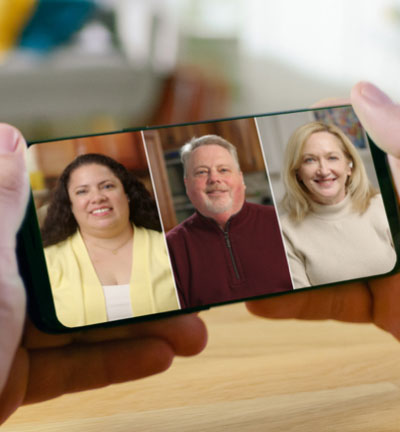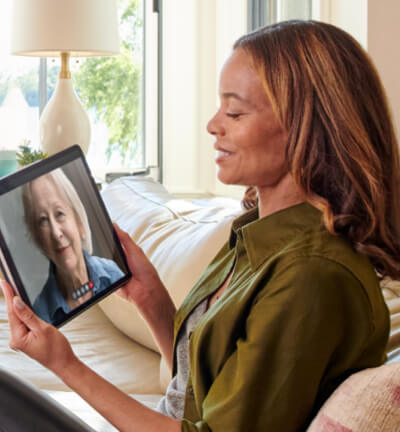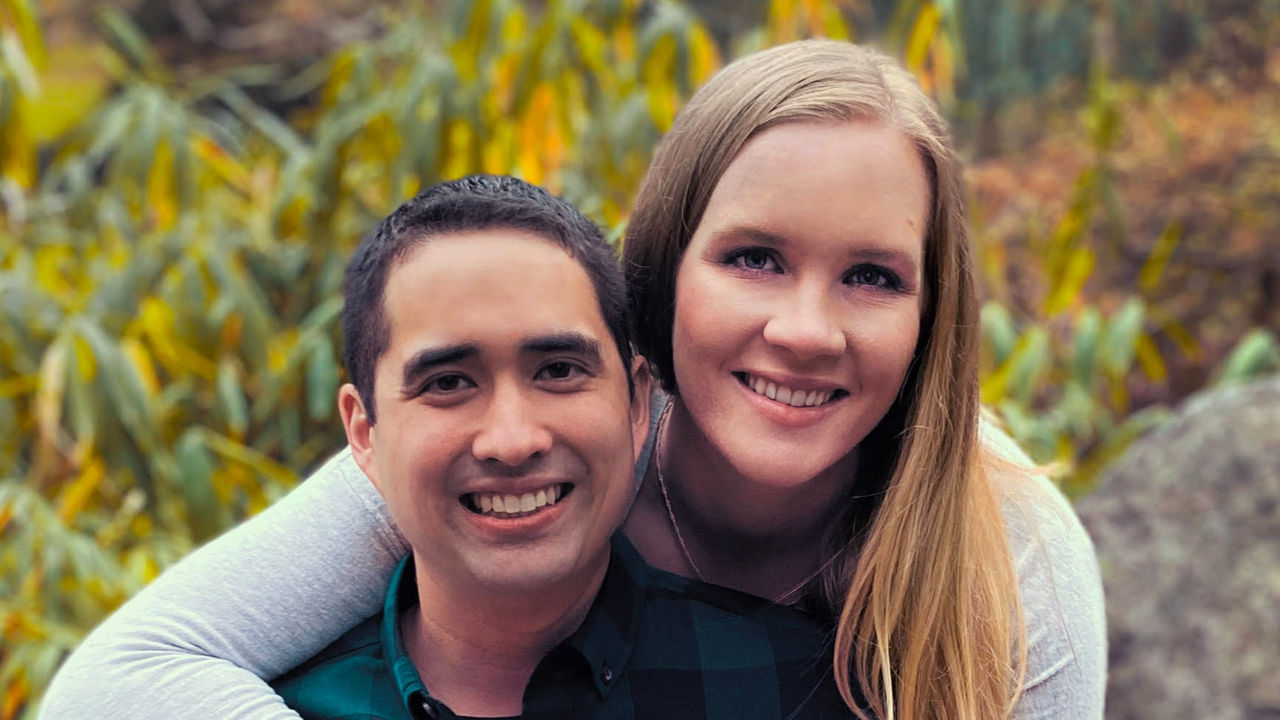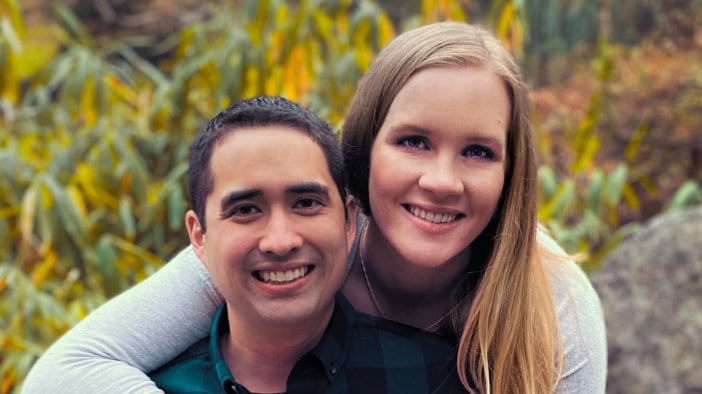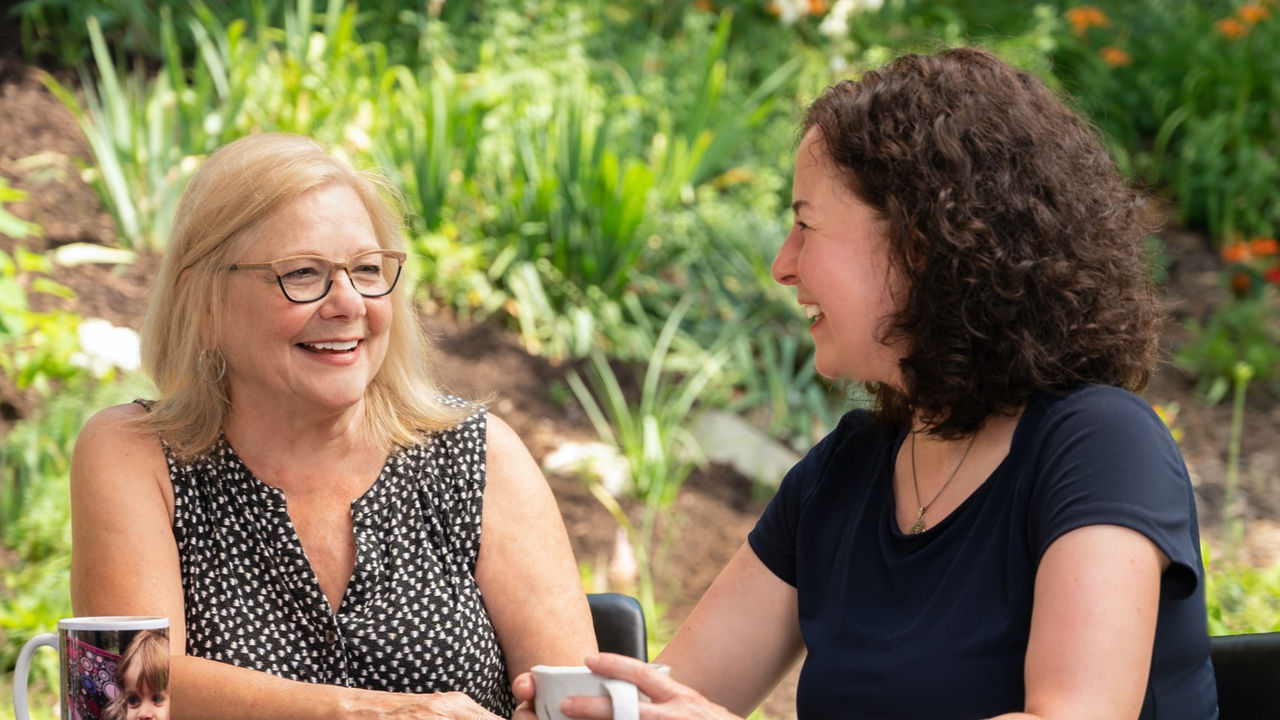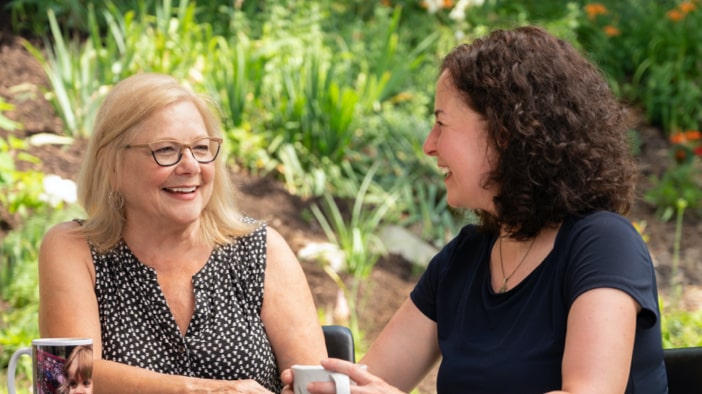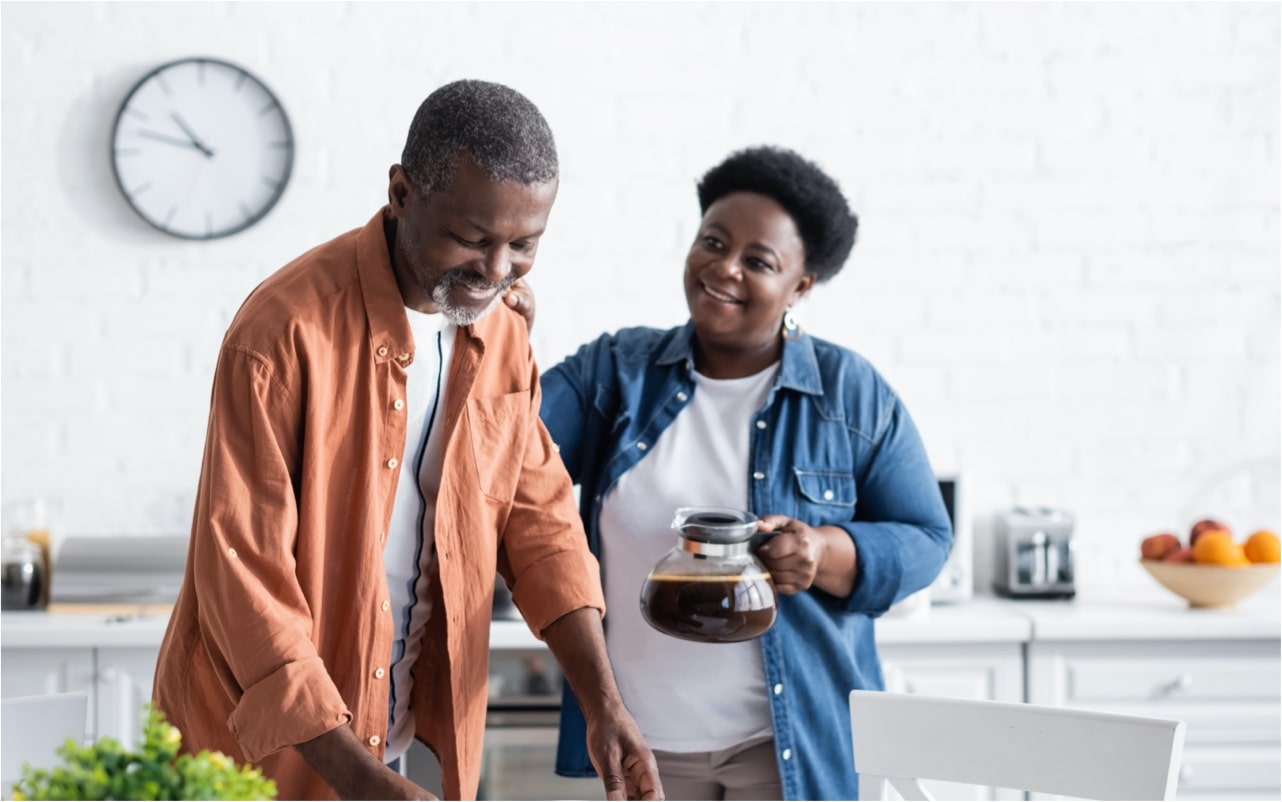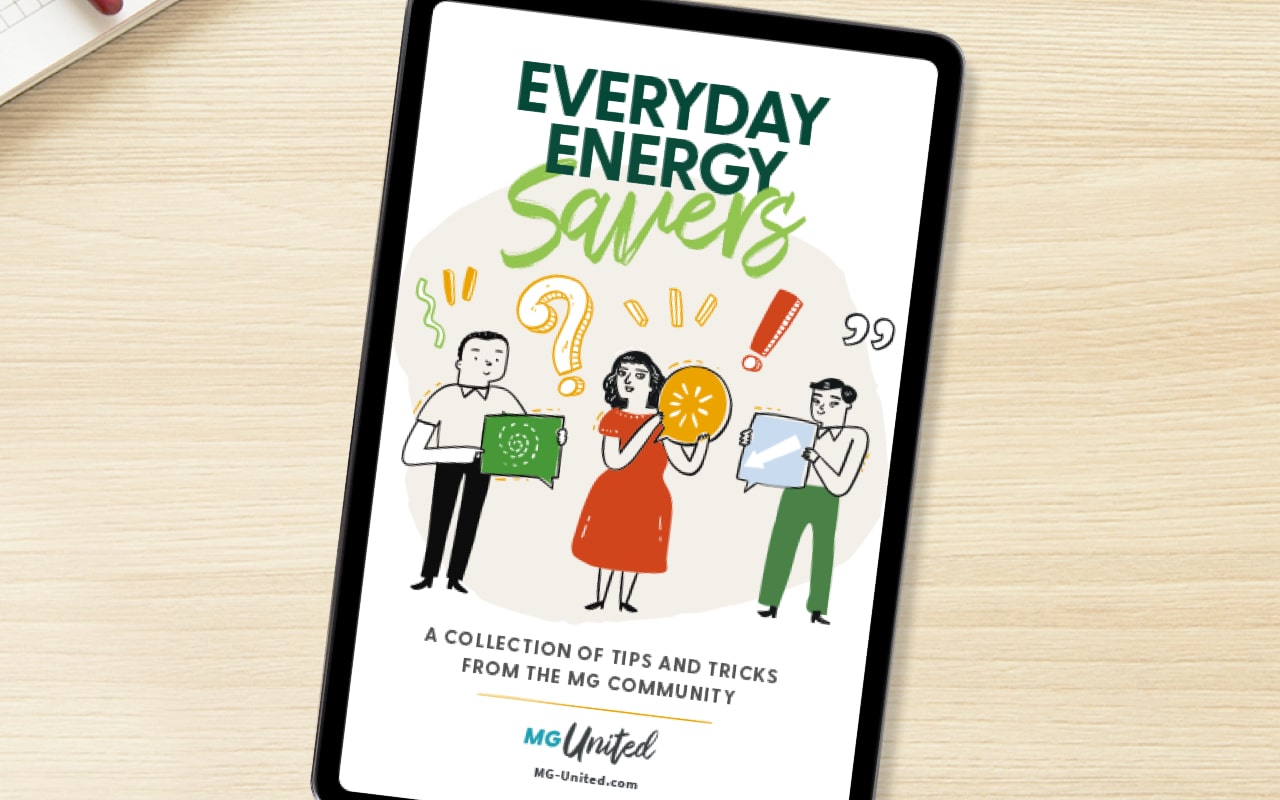These tips might help you check in with your partner about myasthenia gravis (MG) and its effect on your relationship.
Navigating romantic relationships, from the first date to moving in together, can be tricky for anyone. Add in a chronic disease like MG and the challenges might feel even bigger—but there are ways for couples to get ahead of those challenges together.
Whether you’re in a relationship while living with MG or are the partner of someone who is, communication may help you both. Prioritizing and maintaining open communication might help you stay keenly aware of MG symptoms and their effect on your shared everyday experiences. Download the discussion guide below for tips and suggested conversation starters when checking in with each other.
For more insights on how to maximize conversations about MG with your partner, we spoke with Katie Willard Virant, a licensed clinical social worker who works with people living with chronic illnesses and, in some cases, their significant others. Additionally, we talked to three people who have personal experience dealing with MG in relationships: Julia* and Kathy,* who each live with MG, and Kathy’s wife, Diane.* Read on to learn how they’ve cared for their relationships—and themselves—in the face of MG.
Newly Dating or Settled Down? Tailoring the Conversation
Talking to family and friends about MG may require some preparation, but preparing to talk about it with a romantic partner often looks different. Moreover, the stage of your relationship may influence how you approach the conversation.
Julia, who’s been with her husband, Michael, for nine years, met him while country line dancing—after her MG diagnosis. She told him about her MG when they were first dating but remembers one of the harder things to navigate was social plans, as her MG symptoms would fluctuate day by day and week by week. “I wouldn’t commit to things fully until I got closer to the date and had a better idea of how my body was going to function,” she explained. “Luckily, he’s a very chill guy, so we’d meet with open-ended plans. Like, maybe we’d watch a movie or maybe we’d do something more active, but we’d see that day.”
In addition to communicating MG challenges early on, Julia thinks it’s important to ensure your partner is open to learning about those challenges. “It’s a vulnerable thing in those early stages, but if you want the relationship to be a long-term one, you need to see how they respond,” she said.
Kathy and Diane had been together several years by the time Kathy got her MG diagnosis. While the existing foundation for their relationship helped them talk about MG, they knew they still had plenty to figure out. “Be considerate of each other’s vulnerabilities and plan around that,” Kathy said as she described what has helped them navigate MG and their relationship. “Express what you want and listen to what the other person wants, and then agree to some sort of compromise.”
We have frequent check-ins to make sure we’re both on the same page.
Address Pain Points as a Team
For any couple, there may be common areas that are sources of disagreement or simply a sensitive subject. Especially when MG is involved, ensuring you both recognize those recurring issues and can address them together may help you move past them. Some couples may find chores around the house to be a difficult subject, for instance, since saving energy may be tough for those with MG. Julia said she often can’t contribute to household chores evenly with her husband due to MG fatigue, so they keep an open dialogue about it.
“In my mind, I would love all the household chores to be evenly divided, but that’s not the reality a lot of the time,” she said. “We have frequent check-ins to make sure we’re both on the same page and okay with it. Really open communication—I think that’s the most important thing.”
Something else to be aware of is caregiver burnout. Since much of the focus in these relationships may, understandably, go to the person with MG, their partner might struggle with how to ask for support they need. Viewing the illness as a “family issue” rather than an “individual issue” may help caregivers feel more comfortable expressing their needs, according to Virant. She explained, “It’s certainly tough, but the caregiver can say, ‘I’m feeling stressed—I can only imagine how strained and stressed you’re feeling. How can we ensure we both feel more supported?’”
To make sure Diane has the support she needs, Kathy asks for a checklist of things Diane needs help with; then, Kathy picks the ones she can handle. “Diane carries the whole weight of this household on her back,” Kathy said. “If I ask what she needs and what I can do for her, she usually can come up with something that is possible for me to do and not overwhelming.”
Keeping the Romance Alive in a Way That Works for You
While MG may be an important topic between you and your partner, it doesn’t need to be the only topic! Part of your open communication might include making sure you each feel loved and connected in the relationship overall. Try not to shy away from conversations about date nights, intimacy or other areas that help you maintain the level of connection you want. Virant acknowledged that this part of the relationship sometimes gets deprioritized with chronic illness in the picture, but there are ways to reprioritize it.
“Often, the illness will change what a couple used to do for fun,” Virant explained. “But that doesn’t have to mean intimacy changes. Whether scheduling dinner and dancing or sitting on the porch and talking, make sure that will be your time to connect.”
Julia said that when she and her husband make time for date nights, they have a variety of activities they enjoy—from going to the movies to watching football to playing a board game—and will pick one based on her symptoms that day. Kathy and Diane have tapped into overlapping creative interests that don’t take up much physical energy. For them, it could be things like singing together, creating art with pictures or writing letters to one another.
When it comes to talking about physical intimacy, Virant said that couples should feel free to communicate their ideas and know there are multiple ways to share that experience together. “I think couples need permission to give up the narrow idea of what physical intimacy is and really rethink what works and what’s pleasurable, given that the illness changes things,” she shared.
Kathy and Diane have taken that approach to discussing intimacy, redefining what it looks like for them. They said aligning on how they can plan ahead based on energy levels, free time and opportunities for privacy has helped. “For Diane to attend to that for me because she wants to be with me is a really nice way to think about it,” Kathy said.
All feelings are valid.
Continually Check in
Relationships may go through ebbs and flows, but even on your best days, it can be beneficial to check in with each other. Consider setting a regular cadence—weekly, monthly, etc.—that works for both of you to focus on your relationship. This can be a time to review how you're dealing with recurring pain points, what kind of support you need from each other, overall emotional wellness or anything else specific to your situation.
“All feelings are valid,” Diane said of her check-ins with Kathy. If tensions arise, she said they’re transparent with one another about what they need in order to work through issues together. “If I get to the point where I am uncomfortable in a conversation, I say, ‘Help me stay here. Help me figure out how I can stay in the presence of this tension,’” Diane explained. However, taking a break in the conversation may sometimes help these check-ins as well, and it’s important to recognize when that works for you and your partner. “Sometimes, we’ll just take a five-minute break and then come back to it—and then I feel I am coming back prepared,” Kathy said.
Julia mentioned that giving concrete examples when talking to her husband about MG challenges has helped him empathize and understand where she’s coming from. “I will tell him if specific muscle groups are acting up, because it varies a lot with me,” she explained. “Like over the weekend, my triceps might be really weak, so putting away dishes and laundry would be a hard thing. Some days, it’s my quads, so moving around the house would be difficult.”
Exploring how you can manage MG as a couple is something else you can cover in your check-ins that might strengthen your bond. The MG Activities of Daily Living (ADL) profile is one symptom-tracking method used to assess ability to perform daily activities. Sometimes, the MG supporter may also point out things they notice their partner is struggling with, which can be a great way to provide support. Tracking symptoms and having awareness of these struggles should be discussed with your doctor, as they can potentially lead to improvement in MG management.
In addition to helping you overcome issues together, these check-ins may be useful for reigniting an emotional connection with each other. If you’re looking for general questions to spark a productive check-in, Virant suggests partners ask each other what difficulties or feelings they’ve experienced that week and discuss how they can work as a team. A couple of examples she shared are: “How have we worked well together in the past? What qualities helped us get there?”
Above all else, focusing on the love you have for your partner and your shared goals may help you navigate challenges successfully. To further support your check-ins, download the discussion guide on talking to your partner about MG. Ensure both you and your partner have a copy so you can each reference the tips, take notes and prepare thoughts and questions on your own time.



